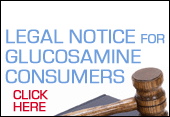|
There are many dangers and discomforts associated with using NSAIDs (Non Steroidal Anti-Inflammatory Drugs). The milder problems include cramps, constipation, confusion, drowsiness, indigestion, swelling in your extremities and (the hands, feet and fingers). There are other more serious safety concerns. The FDA has been more closely examing NSAIDs in recent years and publishing repeated warnings about some serious problems associated with their use. In September 2002, the Nonprescription Drugs Advisory Committee, along with experts from other committees, examined the evidence of U.S. cases of accidental and unintentional overdoses with NSAIDs and acetaminophen and related cases of gastrointestinal (GI) and renal (kidney) toxicity and identifed certain risk factors. The advisory committee's discussions and advice are at: http://www.fda.gov/ohrms/dockets/ac/cder02.htm#NonprescriptionDrugs
In January 2004, the FDA's Center for Drug Evaluation and Research (CDER) reiterated the concerns raised by the 2002 investigation when the CDER sent a letter to every State Board of Pharmacy to advise of safety issues for products containing NSAIDs or acetaminophen -- more specifically, the risk factors for GI bleeding and renal toxicity from their use. The FDA stated that the advisory committee identified the following NSAID-related risk factors for GI bleeding:
- Use at the same time as medications such as anticoagulants and corticosteroids:
- Use at the same time as low dose aspirin or with other NSAIDs:
- Increasing age (over 60 years);
- Increasing dose;
- Previous history of GI bleeding; and
- Use at the same time as alcohol.
The FDA stated that the advisory committee identified the following NSAID-related risk factors for renal toxicity:
- Underlying kidney disease;
- Congestive heart failure;
- Hypertension;
- Elderly (over 65 years);
- Diabetes; and
- Volume depletion.
What's the difference?
Mounting evidence exists that not only is glucosamine a safer alternative; it eases both the pain and slows the progression of the underlying disease. The reason is that glucosamine and chondroitin sulfates work at the cellular level to help rehabilitate the damaged cartilage and they address the pain. NSAID's on the other hand deal only with the pain issue.
You also have to realize that NSAID's are only going to provide some relief which means the disease of OA continues to progress. As well, there are indications that they slow the development of proteoglycans, the essential "water-attracting" molecules in cartilage. These are significant factors to consider when using glucosamine (or, chondroitin) alternatives.
If you must use NSAID's, select the one best suited to your needs and be aware of the potential risks.
Selecting the Product that is Right for You
The short-acting NSAID's are those that deliver rapid pain relief but require you to take them on a frequent basis. This usually means that you must constantly remember to take them (in a timely manner), or your pain will bounce up and down. They do act quickly and are rapidly eliminated by your body which reduces the risk of toxicity.
The longer-lasting NSAID's will generally provide all-day relief from pain but they have major disadvantages. They are potent and they bare the risk of greater toxicity. They also are not going to slow the progression of OA.
If you must use NSAIDs, be aware of their dangers as reported by the FDA, obey the directions provided by their makers, and obtain medical advice if you believe that you may need to use them for more than the limits stated by the FDA and their makers. You must not use NSAIDs in excess amounts or otherwise contrary to the warnings provided by the FDA and the NSAID maker.
J.R. Rogers is the founder and President of Activex America, Inc. makers of Liquid Glucosamine Formula Syn-flex®
Article last updated: 01/31/05
|






